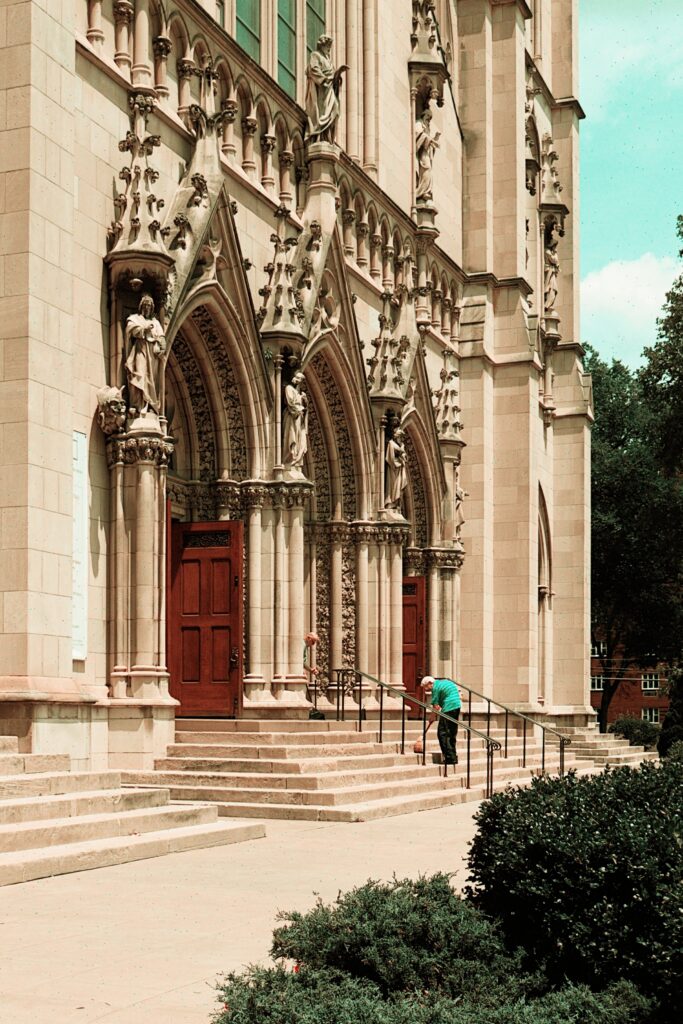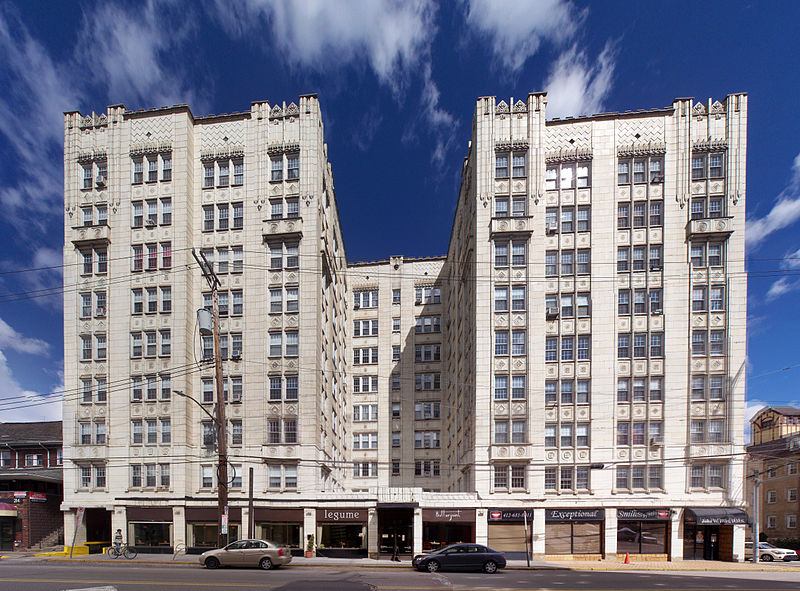
This seems to have been the masterpiece of its architects, the Chicago firm of Egan & Prindeville; indeed, the only other work of theirs mentioned in their Wikipedia article is a cathedral in San Francisco that burned in 1962. If they have to be remembered for only one work, though, this is one to be proud of. It was built in 1906, but—like all great cathedrals—it is really only beginning to take shape more than a century later. It takes a heap of liturgy to make a church a cathedral, and chapels and decorations continue to be added by successive bishops.
The Rectory is designed in a matching but more restrained Gothic style.
Addendum: According to the article “Designing in God’s Name: Architect Carlton Strong,” the rectory (built in 1926–1927) was designed by Thomas Carlton Strong, who also designed Sacred Heart Church in Shadyside.














